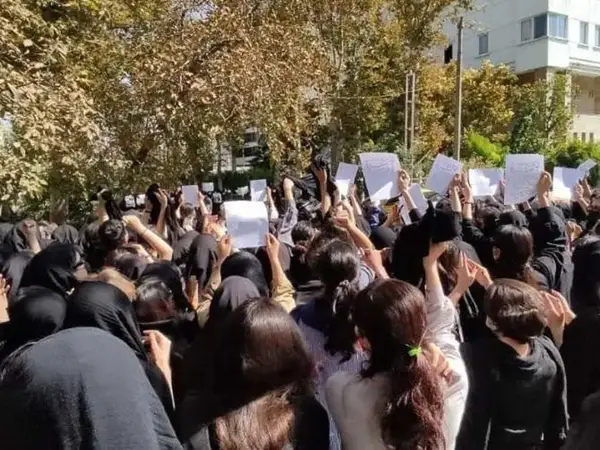In Student Day statements, Iranian student groups have criticized the government for suppressive methods in universities and vowed not to give up their fight for freedom.
Describing the present time as "one of the most suffocating eras for universities in Iranian history," a group of students from Tarbiat Modarres University, a graduate school based in Tehran, emphasized that despite their university being traditionally associated with the education of higher officials and managers of the Islamic regime, its students actively participated in the Woman, Life, Freedom movement.
As a result of their involvement, the students stated that intelligence and security forces have intensified efforts to intimidate and eliminate nonconformist students and professors at their university.
Student Day, which usually falls on December 7, marks the anniversary of a student protest in 1953 against the visit of then-US Vice President Richard Nixon during which three Tehran University students were killed by the police.
Hundreds of university students were arrested across Iran during the protests that followed the death of Mahsa (Jina) Amini in the custody of morality police in late September last year. For months students in various universities held protest rallies inside universities and in some instances, they were supported by their professors and other faculty members.
In the past year, intelligence and security forces have made every effort to bring students and universities, some of which were scenes of extensive protests for months during the Woman, Life, Freedom movement, under control. Students and professors are still called in by intelligence organs and interrogated and often forced to pledge that they will not participate in any protests.
Student sources say authorities have banned hundreds of students in different universities from studying this academic year for taking part in protests and expelled tens of professors for opposing the crackdown on students during anti-government protests.
The crackdown on universities after the Woman, Life, Freedom movement and the recent purge of academia seems even harsher than the Cultural Revolution in the early 1980s, Mahdieh Golrou, a former student activist told Iran International TV.
In 1980, soon after the victory of the Islamic Revolution, the new government’s Cultural Revolutionary Headquarters shut down universities for three years to purge the academia of what it saw as secular professors, who could potentially challenge the clerical ideology. The new regime wanted to enforce its own Islamic revolutionary ideology (Islamification) in higher education establishments. During this period, thousands of professors and students were purged for various reasons, including political inclinations and western influences.
Students of Tarbiat Modarres University said in their statement that they would not leave and surrender their university to totalitarians. “We will fight for the smallest of opportunities to breath and to resist and use them against Islamic totalitarians to reach a humane, free and equal society,” they added.
Student groups in other universities have issued similar statements.
Iran's supreme leader, Ali Khamenei, usually meets with students on Student Day and delivers a speech but this year no meeting or speech was reported.
Some other officials -- including President Ebrahim Raisi, Parliament Speaker Mohammad-Bagher Ghalibaf, and Chief Justice Gholamhossein Mohseni-Ejei -- visited universities and met with pro-government students, not on Student Day but up to three days earlier in ceremonies that appeared to be very low-key in comparison with previous years.
